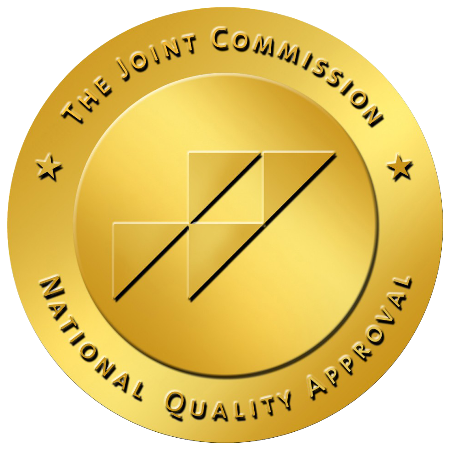What Is Relapse Prevention?

Relapse prevention aims to provide you with the necessary tools to manage challenging situations in life. This will help you maintain your progress in recovery. Staying on track with your recovery is the ultimate goal.
Dr. Allan G. Marlatt developed the relapse prevention model with assistance from Dr. Katie Witkiewitz. Dr. Witkiewitz is now an expert in addiction treatment, harm reduction, and mindfulness-based meditation.
The Marlatt approach, named after its creator, combines therapy with strategies to help prevent and lessen relapses.
The National Institutes of Health (NIH) studied different ways to help people after treatment for a year. They found that people who did relapse prevention therapy had the fewest relapses.
What Is Relapse Prevention?
Relapse prevention aims to minimize the likelihood of falling back into previous patterns shortly after finishing the early phases of treatment. This methodology, often called RP, is a form of cognitive therapy emphasizing mindfulness meditation. It assists in identifying potential triggers for regression and offers strategies for individuals to navigate these obstacles, thereby sustaining their recovery achievements.
Key components of the relapse prevention framework include:
- Empowering individuals to advocate for themselves
- Guiding them in effectively managing challenging scenarios
- Implementing positive reinforcement strategies
- Establishing and maintaining a robust social support network, including family members
Two primary objectives drive the relapse prevention model:
- To prevent any slip or relapse through the application of learned skills and techniques.
- To provide a strategy for managing minor slips, preventing them from escalating into major setbacks.
Lapse vs Relapse
A lapse differs from a relapse because the individual continues to use substances after an initial slip-up. In this model, we view lapses as temporary setbacks. They offer opportunities for learning and adjusting your strategy. This helps to prevent a relapse.
What Are the Three Stages of Relapse?
Three distinct stages characterize relapse:
- Emotional
- Mental
- Physical

Relapse Prevention Strategies
With their therapist, a person will examine their past behaviors to predict future challenges in everyday life. They will devise various strategies to navigate these challenges without resorting to substance use.
Creating a plan to avoid the risk of relapse in addiction recovery involves several steps. These steps include acting out different situations, meditating mindfully, using prevention worksheets, and making promises in a support group. These actions can help individuals stay on track with their recovery journey. By incorporating these strategies into their daily routine, individuals can increase their chances of maintaining sobriety.
To prevent relapse, consider using strategies such as:
Avoiding High-Risk Situations and Triggers
In therapy, people work with a therapist and use worksheets to think about their past substance use. They look at both the good and bad parts of their experiences. High-risk situations are situations that make you want to use drugs or alcohol because they remind you of using them.
Examples of high-risk scenarios and a test of how to cope with potential triggers include:
- People with whom you previously used substances
- Places where you engaged in substance use
- Holiday celebrations and anniversaries
- Memories associated with substance use, regardless of their emotional valence
- Specific moments when you typically would begin using
- The addictive cycle often obscures the impact of these triggers on your well-being. Avoiding things that make you want to use drugs or alcohol at the beginning of treatment can help you succeed.
Avoiding triggers and negative thoughts that make you want to use drugs or alcohol is essential when starting treatment. This can increase your chances of success. Be prepared to confront situations that tempt you to use again when you return home. This will help you stay on the path to recovery.
Coping Skills
Strategizing an exit from high-risk situations and rehearsing these plans prepares you for real-life encounters. This preparation aids in managing your thoughts, emotions, and behaviors in the face of such challenges. Mastering coping mechanisms for potential triggers through relapse prevention techniques is vital for achieving enduring recovery.
Coping strategies encompass:
- Assertively declining offers of alcohol or drugs
- Exiting from situations perceived as dangerous
- Engaging in positive self-talk
- Severing ties with relationships that jeopardize your safety
Eliminating Myths and Placebo Effects
People struggling with addiction frequently harbor misconceptions about the benefits of drug and alcohol use. Therapists assist in examining and dismantling these beliefs. For instance, individuals who consume a large amount of alcohol may feel that it makes them more friendly or calm. On the other hand, those who use stimulants may think that it improves their academic performance.
Cognitive-behavioral therapy aids in altering your self-perception and comprehending the enduring negative impacts of substances, which outweigh any perceived benefits. CBT further encourages focusing on the positive outcomes of abstaining from substance use, particularly during moments of strong temptation.
Managing Your Self-Image
Enhancing self-reliance and confidence is a vital aspect of relapse prevention. A therapist or sponsor won’t always be available to guide you toward positive decisions. The ability to trust in your own choices for recovery is fundamental.
The cognitive-behavioral approach helps people avoid old habits by learning and practicing new skills and limits. This approach doesn’t rely solely on willpower.
It emphasizes the importance of developing new habits and strategies. People can effectively avoid falling back into old habits by focusing on learning and practicing. You achieve self-confidence by making incremental decisions and reaching minor objectives, resulting in significant achievements.
Controlling Urges and Cravings
Addiction experts make a distinction between the terms “urges” and “cravings,” even though people often use them interchangeably. Dr. Marlatt said an urge is a temporary impulse to use substances. A craving is a longer-lasting desire for the feelings and effects of substance use.
Effective methods to control urges and cravings consist of the following:
- Compiling a list of negative consequences of substance use
- Reaching out to a friend or sponsor for assistance
- Engaging in distraction techniques
- Participating in physical activity
- Practicing positive self-affirmations
- Attending a support group
Urges and cravings frequently arise in high-risk scenarios, yet simply having spare time or solitude can also present significant challenges. Recognizing and overcoming these impulses is crucial.

Emergency Relapse and Lapse Management Planning
Preparing for the unpredictable ways of life is integral to relapse prevention, which entails formulating a relapse prevention strategy. An emergency could involve encountering an unavoidable trigger or unintentionally consuming alcohol. Some people think accidentally drinking alcohol is a mistake, while others believe it is a choice to use a substance.
Effective strategies for coping with urges and cravings involve:
- Communicating with or meeting your sponsor
- Attending a group or support meeting for communal encouragement
- Reaching out to your therapist
- Ceasing substance use
- Determining the causes of the lapse and devising strategies to prevent future occurrences
- An error does not signify failure. Your capacity to recommit to recovery and learn from challenges reflects your strength and success. Relapse prevention strategies aim to reinforce this resilience.
Relapse Prevention Examples
Relapse prevention is essential for maintaining long-term recovery and effectively managing triggers and challenging periods.
The purpose of relapse prevention includes:
- Identifying specific situations and individuals that pose a high risk for each person
- Educating on and enhancing healthy coping mechanisms for these situations
- Dispelling myths about the benefits of substance use
- Strengthening self-confidence and trust in one’s capacity for success
- Setting expectations for positive outcomes
- Managing impulses and desires to use substances
- Developing an emergency action plan and steps to take in the event of a relapse
- Having a solid relapse prevention plan is important. It helps individuals make wise decisions, protect their progress, and prevent relapse at any time.
Prevent Relapse with Northridge Addiction Treatment Center
If you or someone you value is struggling with drug or alcohol addiction, help is available. Northridge Addiction Treatment Center provides customized, research-based substance abuse treatment programs and relapse prevention therapy with mental health care in a supportive and comforting residential setting.
Overcoming substance use disorders alone is challenging. Our compassionate and licensed professionals at NATC collaborate with you following a medically supervised detox to create a comprehensive and personalized treatment and an aftercare rehabilitation plan.
Our goal is to help you recover and give you the tools you need for a healthy and fulfilling life. Contact us today.
Find Meaningful Recovery
Our caring and compassionate specialists are eager to help you comfortably navigate this journey to recovery. Our individualized treatment plan, programs, and therapies may be a perfect match for you or your loved one. Let us assist you in living the happy life you deserve. It starts with a phone call.




